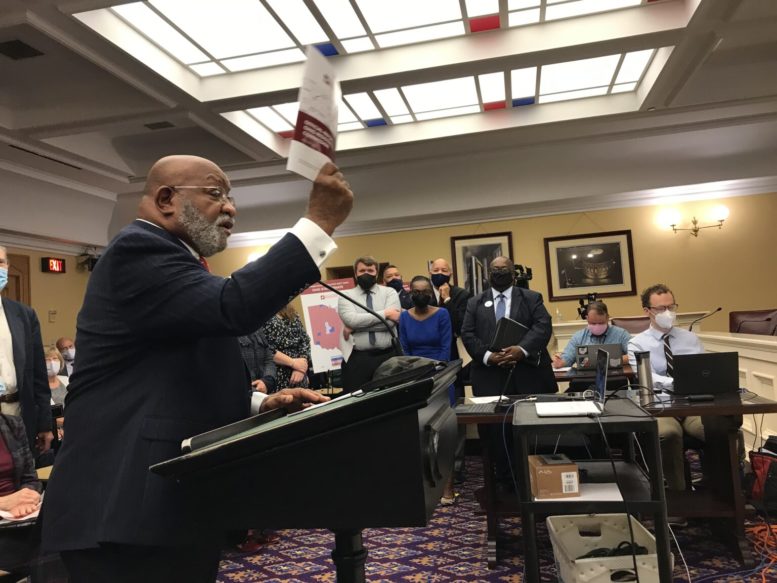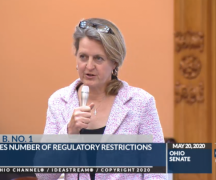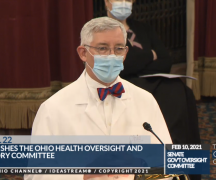BY SUSAN TEBBEN
With the state legislature missing the Sept. 30 deadline to approve congressional maps, the state redistricting commission now has a month to propose, agree to and approve new district lines for Ohio’s U.S. representatives in Congress.
The commission starts out with two proposals already submitted, one from Ohio Senate Democrats and one from the independent Ohio Citizens Redistricting Commission.
The OCRC released their maps the day of the General Assembly deadline to approve congressional maps. When the official redistricting commission was holding public hearings on legislative maps in August, the OCRC also submitted map proposals for that process as well.
The OCRC said it not only took into consideration all the requirements of a constitutional map, including population limits and contiguity of districts, but they also attempted to keep communities together and include minority representation in the drawing of its maps.
“Relying on public input about how best to protect communities of interest across the state is key to understanding how best to protect against undue splitting,” the OCRC said in its analysis of their congressional map.
The proposed map has eight districts that lean more than 50% Republican and seven districts leaning more than 50% Democratic.
In total, the districts in the OCRC map are 53.3% GOP and 46.7% Dem, which the OCRC says “closely aligns with the 54%/46% partisan make-up of Ohio’s voters over the last 10 years.”
The Senate Dems’ maps were released as Senate Bill 237 last week. The map was put forth the day before the deadline passed, and proposes six competitive seats, breaking down the state that was previously split between 12 Republican seats and 4 Democratic seats into eight GOP districts and seven Democratic or nine Republican to six Democratic.
The partisan lean of the Senate Dems’ map is between 45% and 55%, meant to meet the voting split of partisan statewide elections since the last U.S. Census.
The Princeton Gerrymandering Project, a nonpartisan group who analyzes redistricting efforts nationwide gave the Senate Dems’ map an overall grade of “B.” The group gave the highest individual score of the map to its partisan fairness, a “B” as well, saying it gives the Democrats a “slight” advantage. In terms of competitiveness and geographic features, the project gave the map a “C,” average for the categories, but with the possibility for improvements.
The redistricting commission now has until Oct. 31 to draw a new map. If it receives bipartisan agreement, the map will go into effect for 10 years, but if no bipartisan agreement can be reached, the General Assembly returns to work on the maps. If that map isn’t agreed to by both sides, the map can be passed through a simple majority, to last four years.
The legislative maps are already set to be on a four-year cycle since they were passed without the support of the two Democrats on the commission. Those maps are tied up in three different lawsuits, set to be considered by the Ohio Supreme Court in December.
***
Also from Ohio Capital Journal:
State regulators made ‘utility-friendly’ edits to audit of coal plant bailout, emails show; final version omits statement that bailout is not in ratepayers’ best interests
Documents show state utility regulators sought edits to draft versions of an audit they commissioned, prompting the removal of declarations that a ratepayer-funded bailout of two uneconomic coal plants was a bad deal for Ohio electric customers.
Staff at the Public Utilities Commission of Ohio, which sets customers’ water and electric rates, asked an auditor it hired to use a “milder tone and intensity” when describing bailouts of coal fired power plants funded residential and industrial electricity users.
After reviewing a non-public draft of the audit, PUCO employee Mahila Christopher cited a few specific lines of concern in a September 2020 email to auditors, obtained via public records request. She specifically flagged language that states: “keeping the plants running does not seem to be in the best interests of the ratepayers.”
The sentence does not appear in the publicly released version of the audit. READ MORE
Medicaid department mum on contacts with DeWine-connected lobbyist; DeWine friend worked for company that paid $1B in settlements
A close, long-standing friend of Gov. Mike DeWine registered early this year to lobby on behalf of a giant Medicaid provider — just before Attorney General Dave Yost accused the company of ripping off tens of millions of taxpayer dollars.
The company, St. Louis-based Centene, later agreed to pay out $88 million to Ohio and $1 billion more to other states. But the Medicaid department and the governor’s office still won’t say whether DeWine friend and Centene lobbyist Michael Kiggin helped the company keep its massive contract with Ohio despite the fraud claims.
In response to an open-records request for written communications between Kiggin and the government, the Medicaid department last month said it was unable to search for them. Then it ignored questions attempting to clarify the matter — even though Ohio open records law requires it to help clarify requests.
The DeWine administration already was contending with major corruption issues when Yost sued Centene in March. READ MORE







